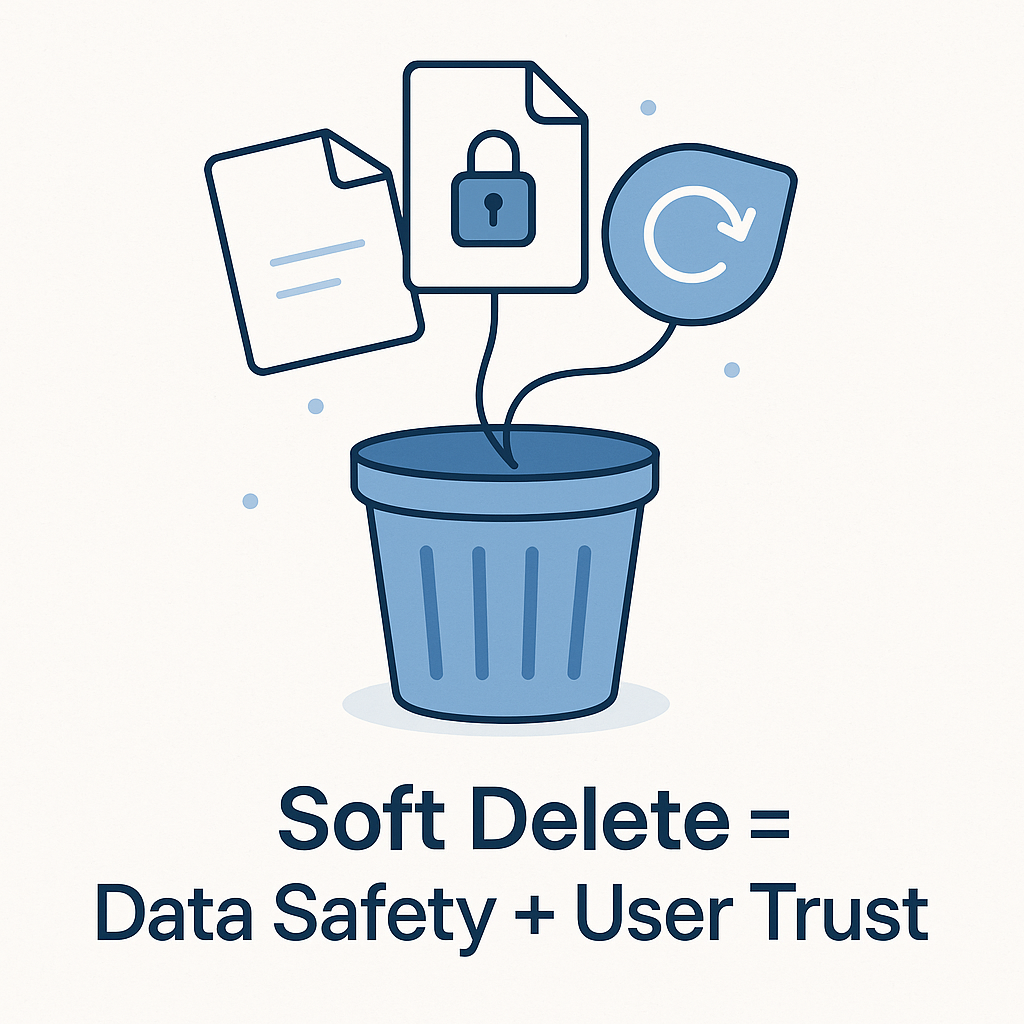In the fast-paced world of web development, data management is one of the most critical challenges developers face. Mistakes happen—records are deleted accidentally, users regret their choices, or legal and business needs require data recovery. This is where soft delete becomes a powerful tool, offering a balance between flexibility, safety, and user experience. What is Soft Delete? Soft delete is a technique where a record in the database is not permanently removed when deleted. Instead, it is marked as “deleted” using a flag or timestamp, but still stored in the system. This ensures the data is hidden from the application but remains retrievable when necessary. Why is Soft Delete Important? Data Recovery & Safety Accidental deletions happen. With soft delete, data can be restored easily, reducing the risk of permanent loss. Audit & Compliance In many industries, regulations require keeping a history of actions and records. Soft delete ensures you can track user actions while still respecting privacy. Improved User Experience Features like “trash” or “archive” in applications are made possible through soft delete. Users appreciate being able to restore what they once thought they no longer needed. Business Insights Even “deleted” data can provide insights. For example, understanding why users remove certain records can guide product improvement. Best Practices with Soft Delete Always make deleted data invisible to standard users unless explicitly restored. Set clear policies for retention: when should soft-deleted data be permanently removed? Ensure that sensitive data is protected even if soft-deleted. Conclusion Soft delete is more than just a technical feature—it is a safeguard for business, compliance, and user trust. By integrating soft delete into your systems, you create a more reliable and user-friendly application while protecting valuable data.
